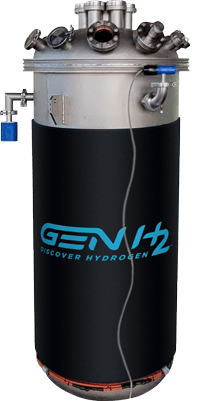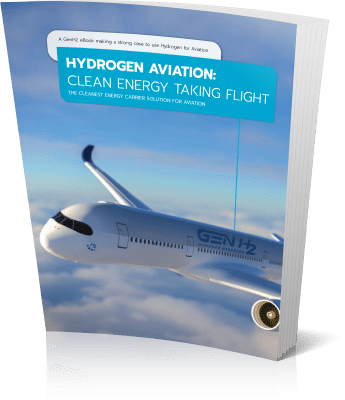Determining Heat Conductivity
The basics of boiloff calorimetry
Heat conductivity gives important information about materials and systems thermal properties and uses. To measure how well an object conducts heat, cryostats lower temperatures of contained objects to cryogenic levels. This is done by adding an extremely cold liquid such as liquid hydrogen or nitrogen, into a boiloff chamber surrounding the object’s container.
Cryostats offered by GenH2 use a process called boiloff calorimetry, which determines how much heat can be held by or transferred through an object. The heat that passes through the object is transferred to a boiloff fluid, causing it to evaporate. Determining how much fluid evaporates helps measure heat conductivity in the sample material. Cryostats can be used in many industries such as medical research, refrigeration, cold chain, food processing, energy storage, and the aerospace industry.
Benefits provided by GenH2’s cryostats include simulation platforms for real-life applications for the hydrogen industry to being able to undergo multiple thermal conductivity tests per day such as in the Macroflash (CS10), which functions without a vacuum chamber. They can also use multiple boiloff fluid types and function in numerous environments. GenH2’s family of cryostats is easy to operate, with higher educational facilities using one of GenH2’s cryostat models, CS10 as a testing device. The largest simulation test platform model CS900, is cutting edge yet with practical capabilities that also include control process simulations, refrigeration design data, and safety assessments which are crucial to advancing the industry.

Download our Solution Brief to learn more about the benefits of cryostats!
- Wide array of uses
- Easy to operate
- Finds several types of data

